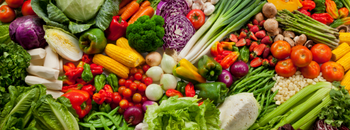Nutrition

Lead can harm children's growth, behavior, and ability to learn and can affect them for life. Lead can also be a problem for adults, especially pregnant women, and their babies. However, when there is nutritious food in the body, it is difficult for lead to be absorbed. So, what's the best way to fuel your child's growth and to help keep your family safe from lead? Eating healthy foods can help keep your child safe from lead. Feed your child a healthy diet. Foods with vitamin C, calcium, and iron can help reduce lead poisoning. A child with lead poisoning often doesn't get enough iron or other minerals in their diet. Ensuring your child gets enough of these nutrients can lower the lead their bodies take in.
The following nutrients can help protect your child from lead poisoning:
Iron-Rich Foods
Normal levels of iron work to protect the body from the harmful effects of lead. Good sources of dietary iron include:
- Lean red meats, fish, and chicken
- Iron-fortified cereals
- Dried fruits (raisins, prunes)
Calcium-Rich Foods
Calcium reduces lead absorption and helps make teeth and bones strong. Good sources of dietary calcium include:
- Milk
- Yogurt
- Cheese
- Green leafy vegetables (spinach, kale, collard greens)
Vitamin C-Rich Foods
Vitamin C and iron-rich foods work together to reduce lead absorption. Good sources of vitamin C include:
- Oranges, orange juice
- Grapefruits, grapefruit juice
- Tomatoes, tomato juice
- Green peppers
The following nutrients can help protect your child from lead poisoning:
- Protein. Choose seafood, lean meat and poultry, eggs, beans, peas, soy products, and unsalted nuts and seeds.
- Vegetables. Serve fresh, frozen, or canned vegetables. Provide a variety of colors, like dark green, red, orange, yellow and purple vegetables. If serving canned or frozen vegetables, look for options lower in sodium.
- Fruits. Offer fresh, frozen, or canned fruits. If your child drinks juice, choose 100% juice without added sugars and limit number of servings. Look for canned fruit that says it's light or packed in its own juice, meaning it's low in added sugar.
- Grains. Choose whole grains, such as whole-wheat bread, oatmeal, popcorn, quinoa, or brown or wild rice.
- Dairy. Encourage your child to eat and drink low-fat dairy products, such as milk, yogurt, cheese, soymilk, or nut milks without added sugars.
Additional resources to assist families with breastfeeding, infant, and toddler nutrition are listed below.
 Community Development Agency
Community Development Agency ABOUT US
ABOUT US